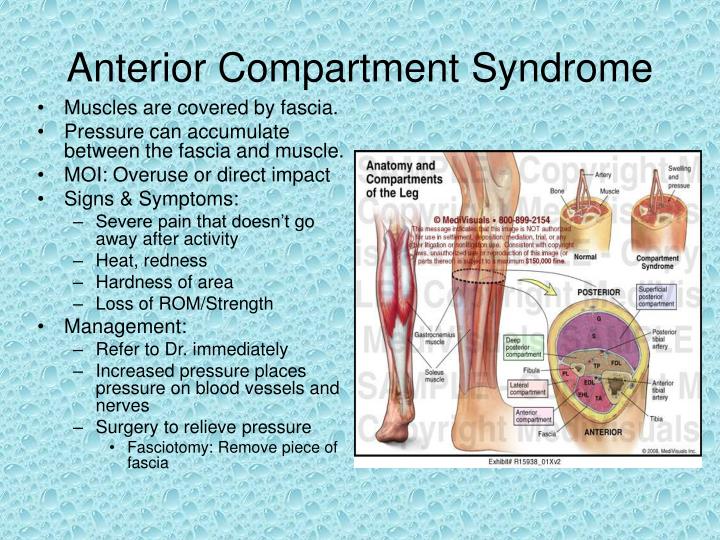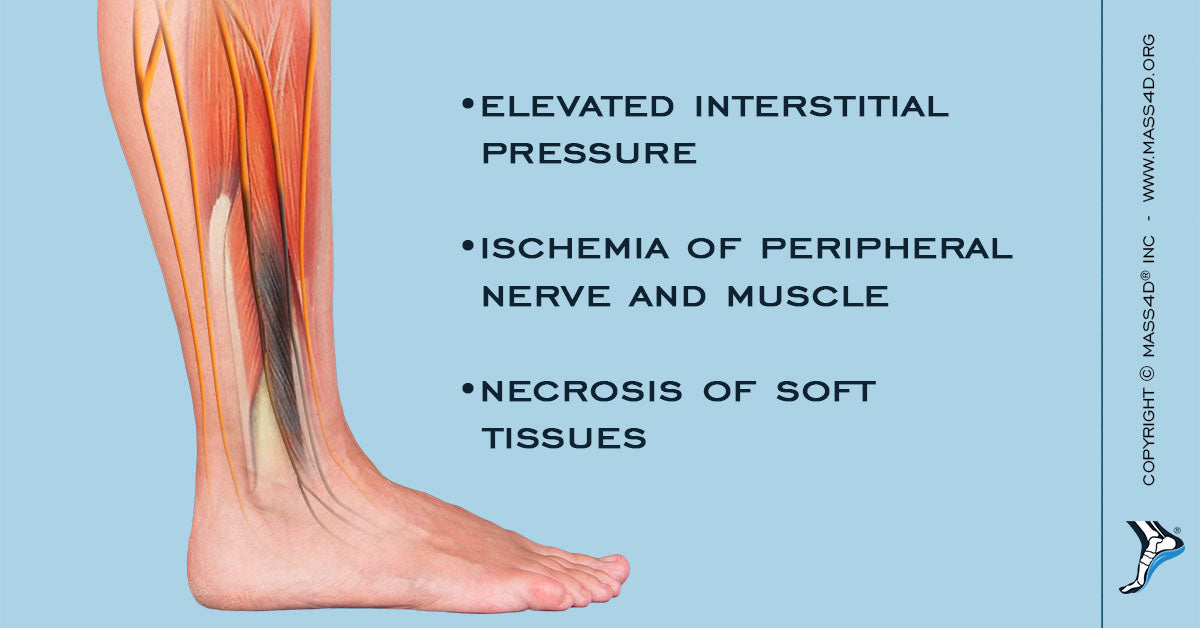
These observations should be performed hourly whilst the patient is deemed still to be at risk.

The key clinical findings are pain out of proportion to the associated injury and pain on passive movement of the muscles of the involved compartments.Clear documentation should include: the time and mechanism of injury, time of evaluation, level of pain, level of consciousness, response to analgesia and whether a regional anaesthetic has been given.Assessment for compartment syndrome should be part of the routine evaluation of patients who present with significant limb injuries, after surgery for limb injuries, and after any prolonged surgical procedure which may result in hypoperfusion of a limb.Absent pulses are usually due to systemic hypotension, arterial occlusion or vascular injury. Pulses are normally present in compartment syndrome. Early diagnosis and treatment is vital to avoid severe disability. Other important causes include restrictive dressings or casts, prolonged immobilization and reperfusion of ischaemic limbs. In clinical practice, it is most often seen after tibial and forearm fractures, high-energy wrist fractures and crush injuries. With compartment syndrome, the pressures are elevated, especially after exercise.Acute compartment syndrome of a limb is due to raised pressure within a closed fascial compartment causing local tissue ischaemia and hypoxia. Pressures are measured at rest and then one minute and five minutes after exercise. These pressures are measured by using a special instrument that analyzes pressure through a needle placed in the muscle.

MRI and other imaging studies have been used to diagnose compartment syndrome, but the standard diagnostic test is a measurement of the compartment pressures. The evaluation for compartment syndrome includes evaluating for other causes of leg pain such as medical tibial stress syndrome (shin splints), a stress fracture, a nerve entrapment or popliteal artery entrapment syndrome. The symptoms are typically relieved quickly when you stop the activity. You may develop muscle weakness and sensory disturbance in the involved compartment. Patients then experience an aching pain in the compartment that becomes sharp if they continue activity. Exertional compartment syndrome occurs when the muscles expand during exercise and the fascial covering around the muscles becomes too tight. Each compartment has a covering of fascia. There are four compartments in the lower leg - one in the front, one on the outside, and two in the back (superficial and deep). In 82% of cases, the pain is in both legs. The condition is most common in runners, but it also occurs in other running sports including soccer, field hockey, basketball, and lacrosse. The median age of onset is 20 years males and females are equally affected. Although the condition can occur in other compartments, 95% of cases are in the lower leg. Exertional compartment syndrome (ECS) is a condition that causes pain with exertion.


 0 kommentar(er)
0 kommentar(er)
